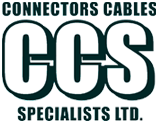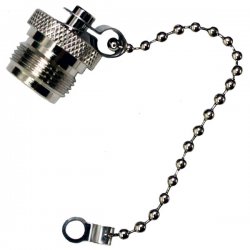UHF Solder Plug Pressure Sleeve
The UHF connector, also called the Amphenol coaxial connector, is a World War II threaded RF connector design, from an era when UHF referred to frequencies over 30 MHz. Originally intended for use as a video connector in RADAR applications, the connector was later used for RF applications. This connector was developed on basis of a shielded banana plug.
UHF connectors are generally usable through what is now known as the VHF and HF frequencies and can handle RF power levels over one kilowatt. There is variation between manufacturers with the choice of dielectric, the PTFE types being favored where low loss is desired. The average power handling of the PTFE versions is essentially set by heating of the center pin, and is therefore frequency dependent, as the RF resistance rises as the skin depth falls. At low frequencies the power handling is rather better than that of the similar sized N connector. The UHF connector is the most common connector in amateur radio applications up to 150 MHz. In the US, the silver-plated version with Teflon dielectric is used in UHF applications up to 450 MHz for the 70 cm band.









-1140x300w.jpg)








































